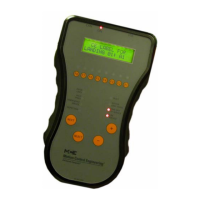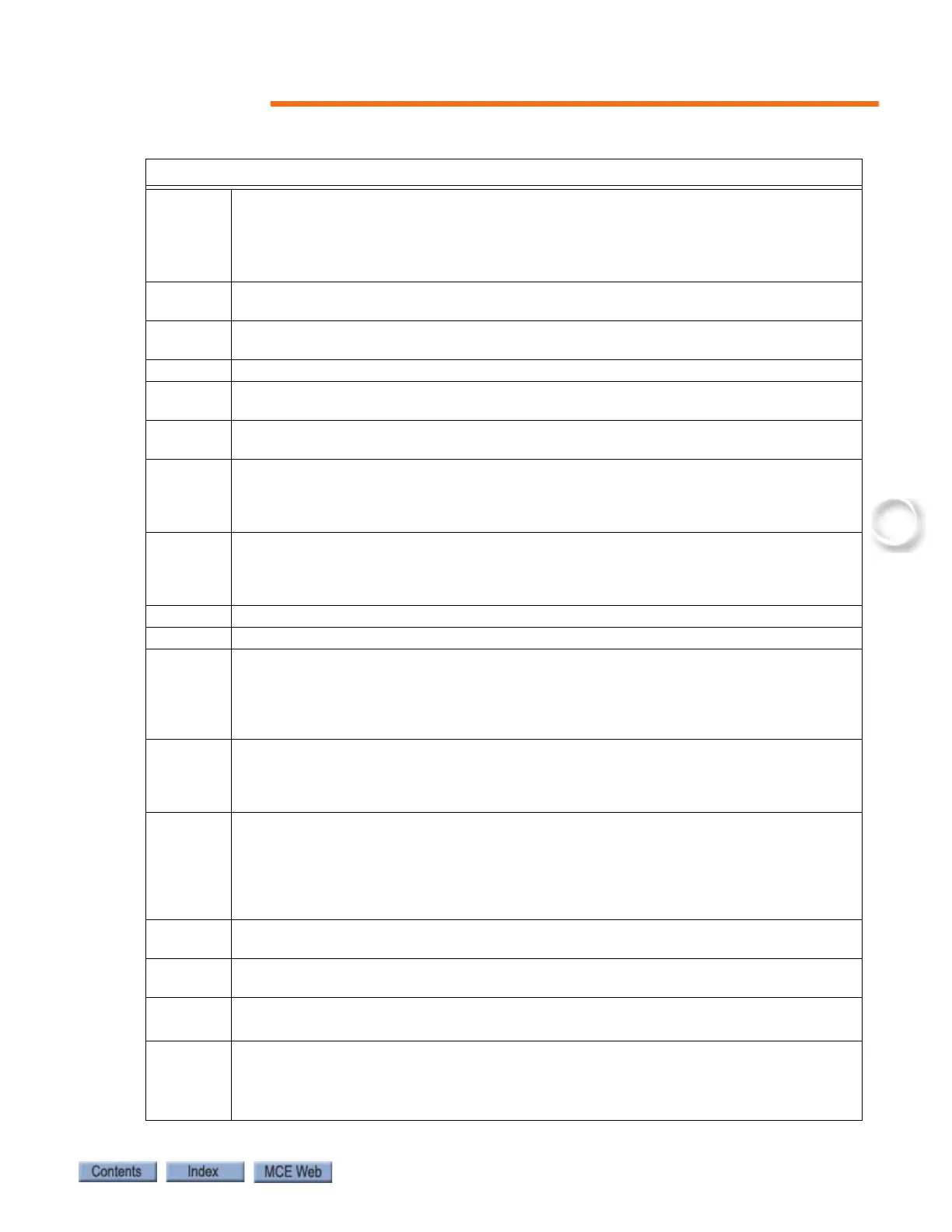F1: Program Mode
5-35
HOSP In-car Hospital Service Switch Input - This input is used to initiate Hospital Service Phase
2 operation. Typically, this input is wired to a keyed hospital service switch that is located
inside the car. Upon activation, the car will accept a call for any floor, and proceed non-
stop to that floor after the doors close. Deactivation of the input restores normal opera-
tion of the car.
ICPD In Car Inspection Down Direction. Intended for a car panel inspection direction button
input.
ICPU In Car Inspection Up Direction. Intended for a car panel inspection direction button
input.
INA Monitoring input for the INAX relay coil.
INSDN Inspection Down Input - This input is used to indicate that there is an intent to move in
the down direction while on Inspection operation.
INSUP Inspection Up Input - This input is used to indicate that there is an intent to move in the
up direction while on Inspection operation.
IRCOF Front Infrared Cutout. - This is a normally active input. When this input goes low, the
infrared detector signal is ignored for the front door only and the door will always close
at reduced torque and speed, i.e., nudge closed unless the door requires a constant door
close button signal to close. In this case the door will close at full speed.
IRCOR Rear Infrared Cutout - This is a normally active input. When this input goes low, the
infrared detector signal is ignored for the rear door only and the door will always close at
reduced torque and speed, i.e., nudge closed unless the door requires a constant door
close button signal to close. In this case the door will close at full speed.
LD Level Down.
LU Level Up.
LLI Light Load Input - When activated the elevator will only allow the number of car calls
specified by the Light Load Car Call Limit parameter to be registered. If more are regis-
tered, all car calls are canceled. A discrete load weigher contact is typically wired to this
input, indicating that a very minimal passenger load exists in the car. Please refer to
“LIGHT LOAD WEIGHING? / LIGHT LOAD CAR CALL LIMIT” on page 5-48.
LOS Low Oil Switch - (PHC controllers) - This input is connected to a level switch in the oil
reservoir. Once activated, the car will immediately lower to the bottom landing and cycle
the doors. To clear this condition, on the HC-CTL board, place the car on Machine Room
Inspection, press the FAULT RESET button, then return the car to Normal operation.
LSR Landing System Redundancy Input - This input is used for redundancy checking. It mon-
itors the door zone (DZ) level down (LD) circuits. On any run between floors, we expect
the LSR input to go low at least once. If, however the DZ sensor has failed closed, power
will be present continuously on the LSR input and the car will not be permitted to restart.
“LANDING SYSTEM REDUNDANCY FAILURE” will be displayed on the LCD display. If
either the LU or LD sensors failed closed, the controller will not permit the car to restart.
LWB Load Weigher Bypass - This input is used to bypass the load weigher inputs (LLI, HLI,
OVL and DLI).
MNO Manual Override - When activated, automatic lowering is overridden. The car will recall
to the next available landing and complete the recall process.
NSI Non-Stop Input (Attendant Service) - Activation of this input will cause the car to bypass
all hall calls. The input is enabled only when the car is in Attendant operation.
OTTS
Oil Tank Temperature Switch. When activated, the car will lower to the bottom landing,
cycle the doors, and turn off power to the solid state starter by dropping the TM output.
To clear the fault condition, on the HC-CTL board, place the car on Machine Room
Inspection, press the FAULT RESET button, then return the car to Normal operation.
Table 5.6 Spare Inputs Menu Options
Spare Inputs Menu Options

